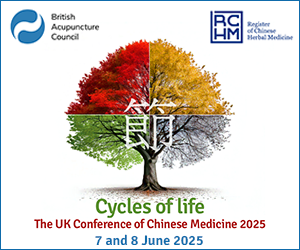Casebook: four-step point prescription for pain
Most acupuncture programmes do a fantastic job of ensuring we become safe practitioners. But becoming great? That’s up to us. Just like in any healthcare profession – whether it’s physical therapy, chiropractic, or medicine – excellence comes from mentorship, continuing education, and hands-on experience in a busy clinic.
Early in my career, I quickly realised I had gaps in my training. Determined to fill them, I sought out the top acupuncture teachers in the United States – both in eastern and western styles. Through years of study, trial, and more patient visits than I can count, I developed a simple checklist that consistently delivers outstanding results in treating pain.
I also shared this checklist approach with my students while serving as a clinic supervisor at an acupuncture college in New York. The outcome? Exceptional patient results and a clinic shift so popular it was harder to get into than a Michelin-starred restaurant on a Saturday night.
The goal of this article is to break down each step in this approach to pain. I’ll also present a simple case study demonstrating how to construct an acupuncture treatment that delivers impressive clinical results, streamlines your workflow, and generates buzz in your community. So, let’s get started.
Step 1: local needling
This step is essential – and yet, some acupuncture systems skip it entirely. The key here is identifying the pain-generating tissues – muscle, ligament, tendon, nerve, etc – and using acupuncture to neuromodulate them, creating an optimal healing environment.
Research confirms that acupuncture triggers the release of a biochemical cocktail at the insertion site – what one of my mentors fondly called a ‘healing chemical soup’. This mix includes CGRP (calcitonin gene-related peptide), serotonin, nerve growth factor, histamine, red and white blood cells, prostaglandins, and glutamate. It’s like sending in a repair crew for the body.
Ignoring this natural mechanism is like having a fire extinguisher in a burning building and deciding not to use it. Why wouldn’t we take advantage of such a powerful, built-in healing response?
Step 2: segmental needling
Hua Tuo, the legendary physician who developed the original shu points, recognised the intricate relationship between the spinal cord and various organs and tissues. Modern anatomy and neurophysiology back up his observations: stimulating specific spinal segments prompts the release of neuropeptides that help regulate pain and promote healing.
Once we identify the pain generators, we determine which spinal segment innervates them. Needling the huatuojiaji (HTJJ) points at the corresponding spinal levels – plus one level above and below – enhances the body’s endogenous opioid response, reducing pain more effectively.
Step 3: distal needling
Some of the most powerful pain-relieving acupuncture points are located below the elbows and knees. This is no coincidence – these points influence the hypothalamus, triggering the release of beta-endorphins, the body’s natural painkillers.
You already know the big hitters: LI 4 he gu, LIV 3 tai chong, ST 36 zu san li, SP 6 san yin jiao, GB 34 yang ling quan, LI 11 qu chi, to name but a few. If we know these points have potent analgesic effects – it would be foolish not to incorporate them into our treatments. Think of them as the secret weapons that amplify the effectiveness of local and segmental needling.
Step 4: microsystem needling
There are many microsystems in acupuncture, but my personal favourite is auricular acupuncture. Why? Because ear needles can stay in for days, extending the benefits of the treatment long after the patient leaves the clinic.
A practical approach is to pair an anatomical ear point with a master point based on the patient’s history and clinical presentation. This not only enhances pain relief but also provides ongoing stimulation to support the healing process.
Putting it all together: a simple case study
Let’s apply this approach to a common clinical scenario – acute lower back pain with right-sided quadratus lumborum (QL) strain:
- step 1: local motor and trigger point needling of the QL
- step 2: HTJJ points at L1 to L4 bilaterally
- step 3: distal points BL 40 wei zhong and BL 60 kun lun bilaterally
- step 4: ear needles on the lower back point and shen men on the affected side
By systematically incorporating local, segmental, distal, and microsystem needling, we create a well-rounded and highly effective acupuncture prescription. This method not only yields outstanding clinical results but also keeps patients coming back – and referring their friends.
So, why not give this approach a try? Refine it to fit your own style, and you should find your pain treatments become more effective, efficient, and sought after!
If you want to hear about Dimitri’s four-step approach direct from the man himself, just take a look at this YouTube video
Dr Dimitri Boules is an experienced acupuncture clinician dedicated to improving lives through holistic care. He specialises in the treatment of musculoskeletal pain and dysfunction with over a decade of experience.
Currently Dr Boules mentors future professionals, and has authored several articles as well as a respected manual for acupuncturists. He holds a doctorate from Pacific College of Oriental Medicine and both master’s and bachelor’s degrees from the New York College of Health Professions.









